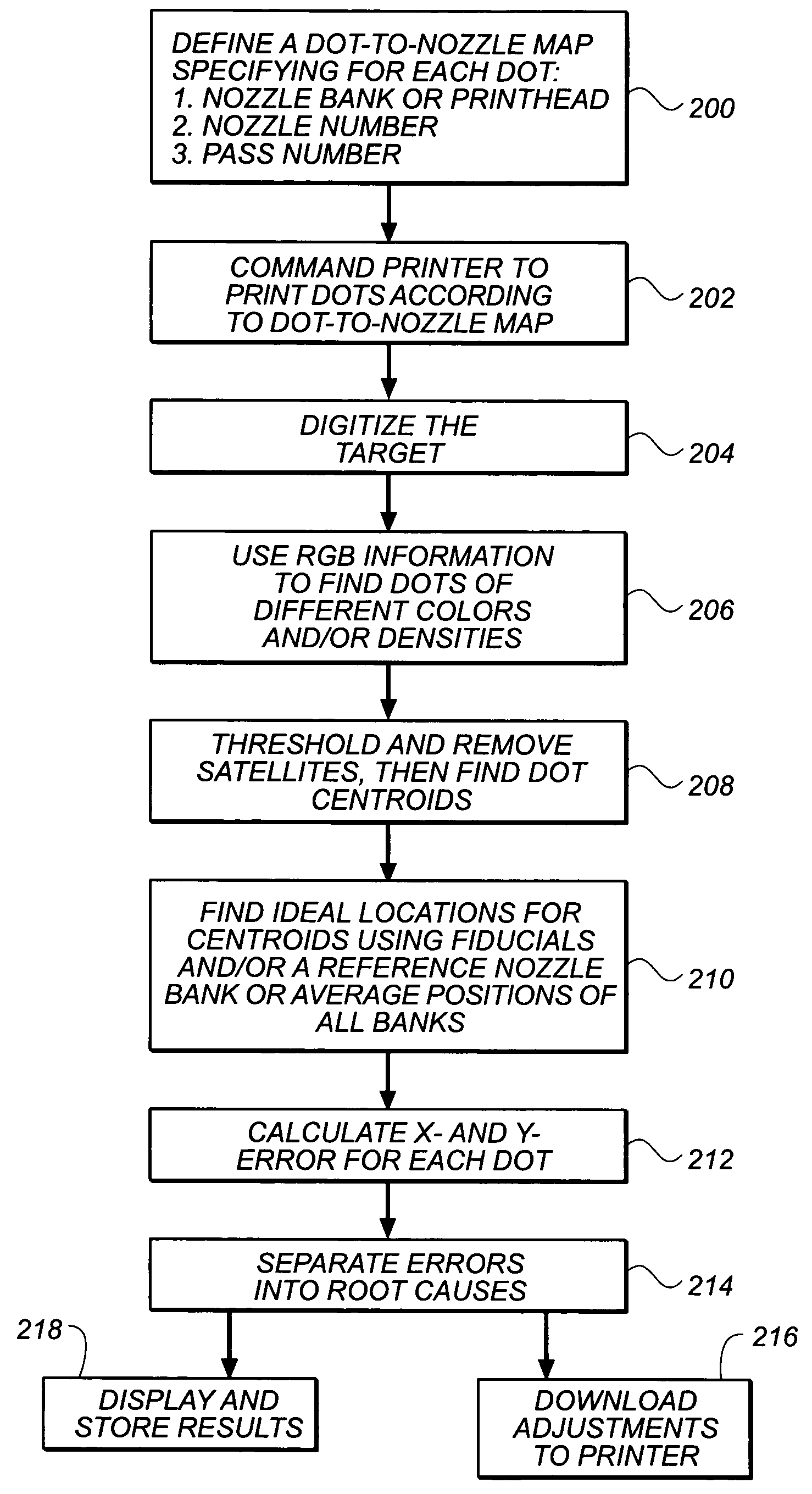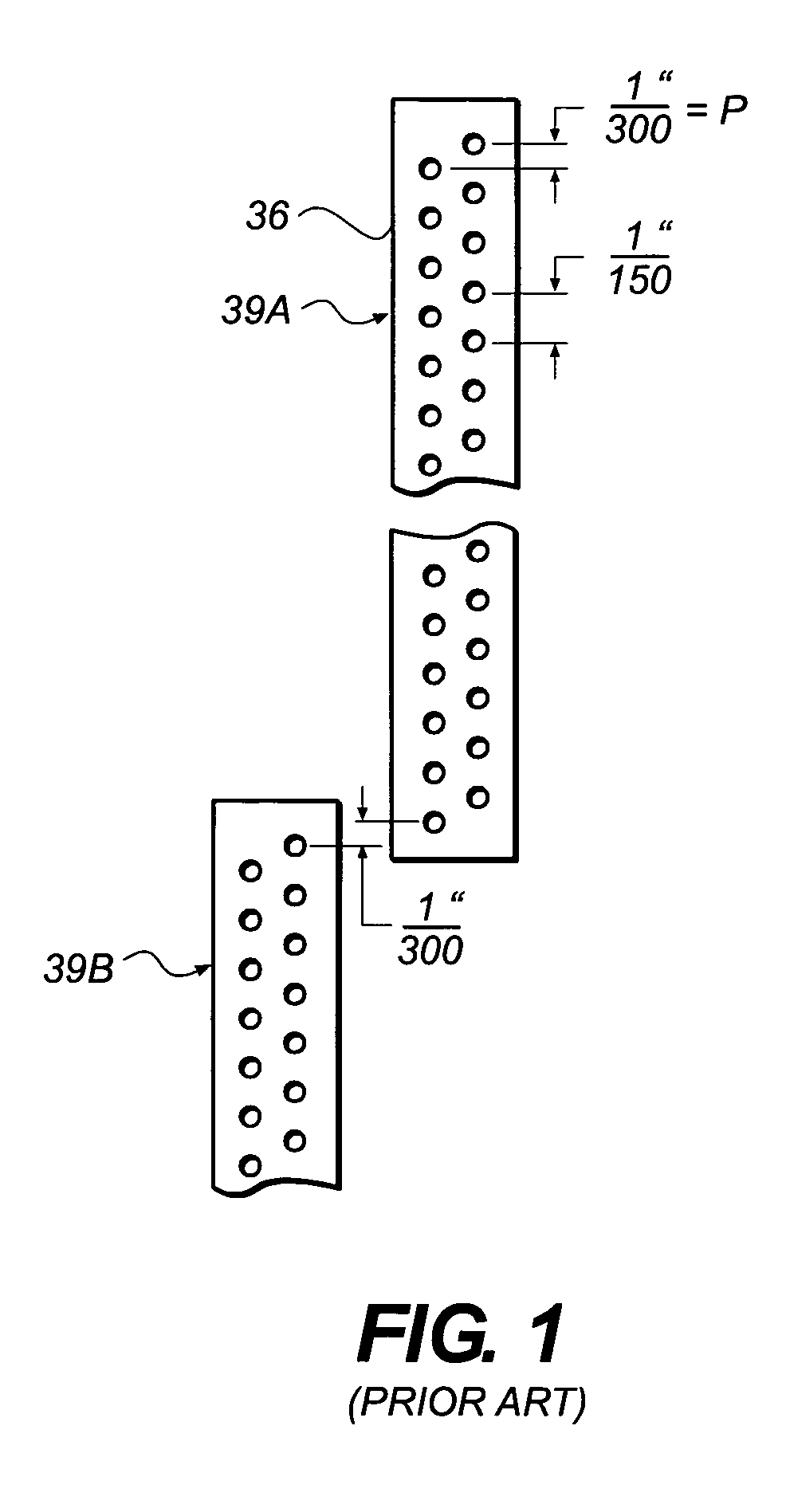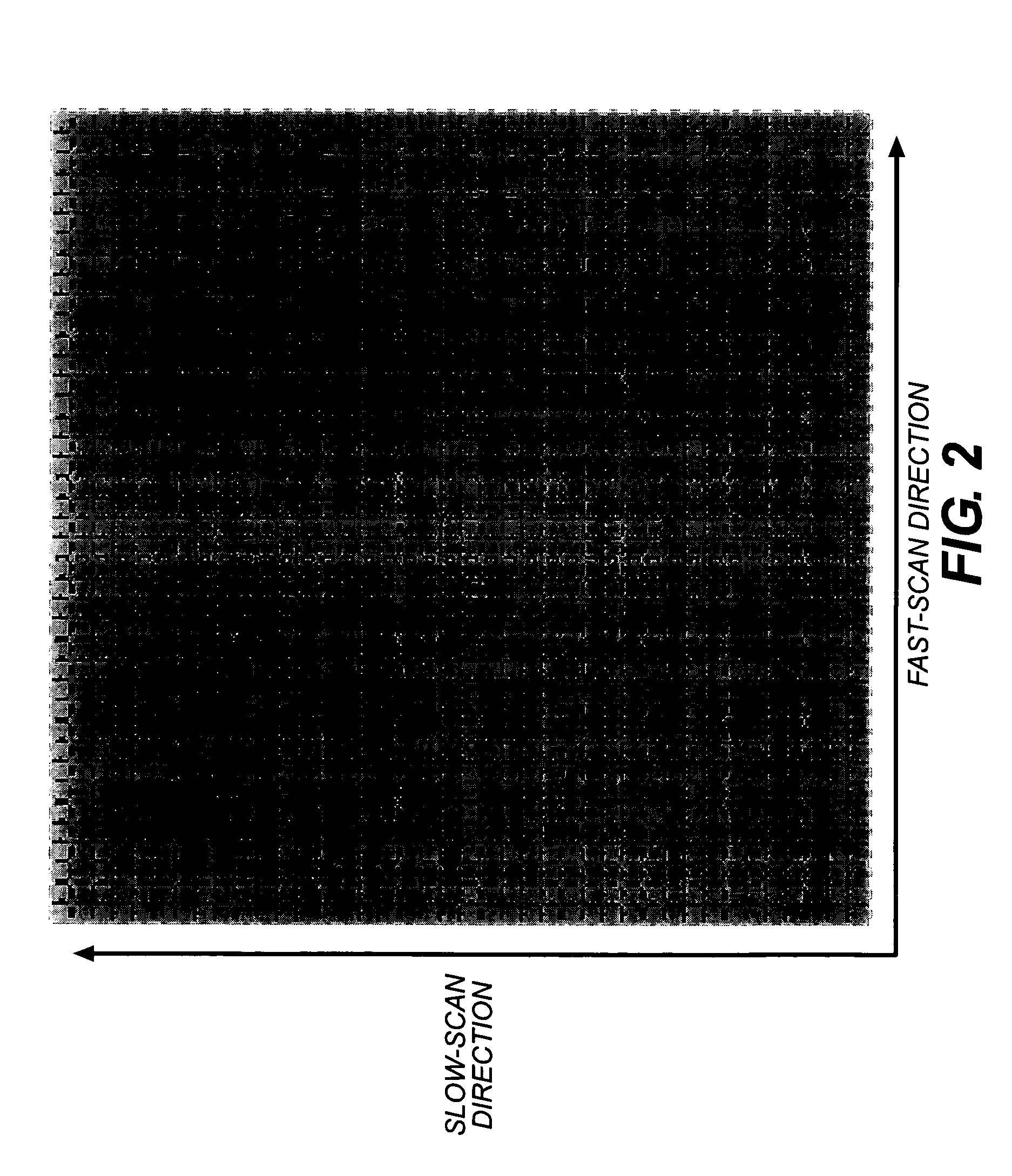Method of aligning inkjet nozzle banks for an inkjet printer
a technology of inkjet printing and nozzle bank, which is applied in the field of methods and inkjet printing, can solve the problems of relatively poor image quality, relatively complex fabrication of pagewidth inkjet printheads, and not gained a large following, and achieve the effect of reducing image artifacts
- Summary
- Abstract
- Description
- Claims
- Application Information
AI Technical Summary
Benefits of technology
Problems solved by technology
Method used
Image
Examples
Embodiment Construction
[0056]The present description will be directed in particular to elements forming part of, or cooperating more directly with, apparatus and methods in accordance with the present invention. It is to be understood that elements not specifically shown or described may take various forms well known to those skilled in the art.
[0057]In the specification, various terms are employed and are defined as follows:
[0058]The term “banding” refers to an imaging artifact in which objectionable lines or density variations are visible up and in the image. Banding may occur as vertical banding or horizontal banding, the horizontal direction coinciding with the fast scan direction and the vertical direction coinciding with the slow scan direction.
[0059]The term “dot size” relates to the size of a printed dot and may be determined by thresholding a digitized target containing the dots, the dot size may be expressed as an area, diameter, or other convenient metric. Dot size may be inferred from optical ...
PUM
 Login to View More
Login to View More Abstract
Description
Claims
Application Information
 Login to View More
Login to View More - R&D
- Intellectual Property
- Life Sciences
- Materials
- Tech Scout
- Unparalleled Data Quality
- Higher Quality Content
- 60% Fewer Hallucinations
Browse by: Latest US Patents, China's latest patents, Technical Efficacy Thesaurus, Application Domain, Technology Topic, Popular Technical Reports.
© 2025 PatSnap. All rights reserved.Legal|Privacy policy|Modern Slavery Act Transparency Statement|Sitemap|About US| Contact US: help@patsnap.com



